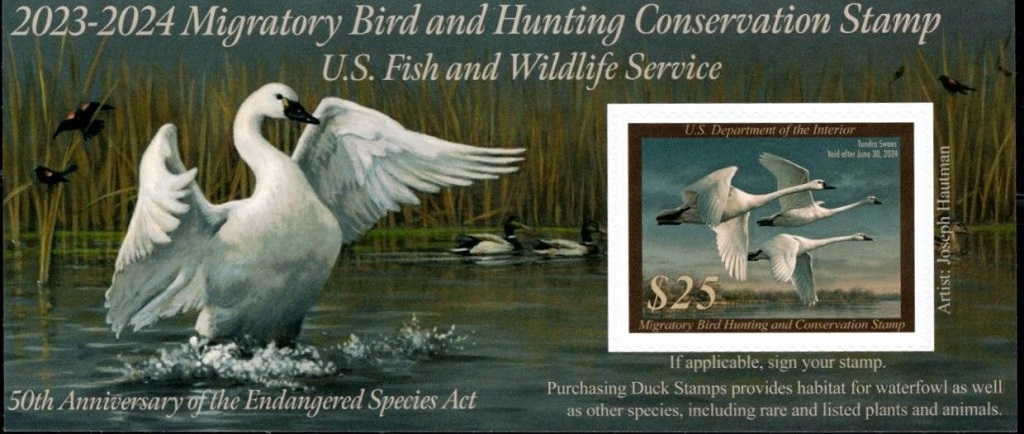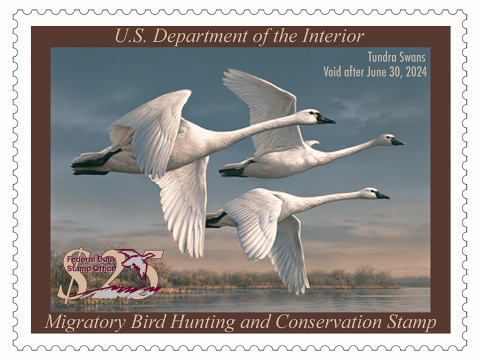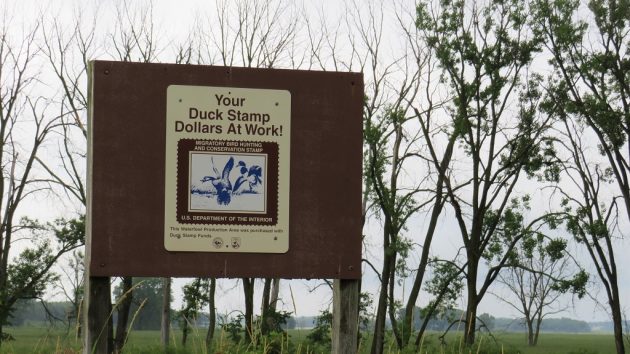
A handful of federal conservation programs have permanent stable funding mechanisms that allow them to consistently, albeit quietly, fulfill their goals. These programs are effectively on auto-pilot. Among them are Federal Duck Stamps and related waterfowl conservation programs.
As background, a Migratory Bird Hunting and Conservation Stamp costs $25 and income from sales goes into the Migratory Bird Conservation Fund (“MBCF”). There are several funding sources for the MBCF, but two predominate: (1) Duck Stamp sales, and (2) import duties on arms and ammunition.
Acquisitions made with the MBCF must be approved by the Migratory Bird Conservation Commission (“MBCC”). Membership of the MBCC is set by law: the Secretary of the Interior, the Secretary of Agriculture, the Administrator of the EPA, two Senators, and two Representatives. By tradition, the congressional members are equally divided between Republicans and Democrats.
Thus, Duck Stamp money goes into the MBCF and the MBCC decides how to spend those funds. To date, the MBCF has either purchased or obtained conservation easements for approximately 6 million acres of habitat, adding to our federal public lands. Those acquisitions include substantial parts of many of the Top 25 NWRs for birding.
In 1989, the MBCC was further tasked with approving projects under the North American Wetlands Conservation Act (NAWCA), which provides federal funds for partnerships to protect and manage wetlands and other habitats for migratory birds and to implement the North American Waterfowl Management Plan.
The MBCC meets twice a year and here’s what it did this year:
- In April 2023, the MBCC announced $146 million in funding to provide FWS and partners the ability to conserve or restore 242,000 acres of wetland and associated upland habitats.
- In September 2023, the MBCC announced $50.6 million in funding to help conserve more than 106,600 acres of habitat.
Many funded projects are grants to organizations (e.g., Ducks Unlimited) or local governments for land acquisition, conservation, or restoration. Most grant money is matched by other parties so the impact of the grants is multiplied. Although the size of any individual project may be modest, the MBCC dutifully approves projects twice a year, each and every year, and it adds up over time.

Duck Stamp funds also allow FWS to expand the National Wildlife Refuge System. In 2023, it did so with the following allocations:
- Cat Island NWR (Louisiana): $1,466,000 to acquire 548 acres.
- Clarks River NWR (Kentucky): $6,621,000 to acquire 2,482 acres.
- Green River NWR (Kentucky): $11,372,000 to acquire 1,335 acres.
- Silvio O. Conte NWR (New Hampshire): $1,066,450 to acquire 797 acres.
- Willapa NWR (Washington): $1,255,248 to acquire 239 acres.
- Grays Lake NWR (Idaho): $6,240,000 to acquire 2,496 acres.
- Cape Romain NWR (South Carolina): $5,000,000 to acquire 446 acres.
These acquisitions are not just any land: projects conserve habitat that has been strategically-selected to benefit migratory birds, typically along the major North American flyways. Moreover, once the land is protected, it is habitat that is permanently saved for the benefit of birds and other wildlife.
Without much fanfare, Duck Stamps and other federal programs obtain land for conservation year after year.

Parts of this post were adapted from an earlier post.













Leave a Comment